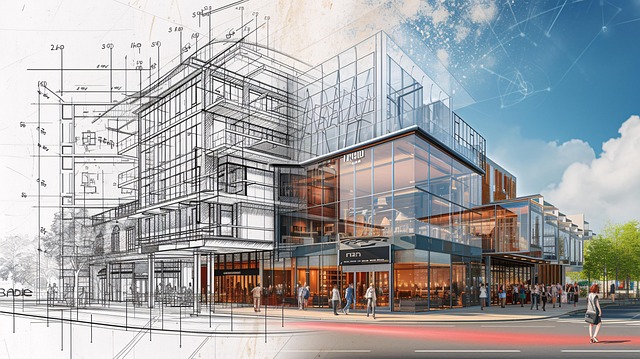3D CAD modeling and laser-cutting technology have transformed sheet metal manufacturing, offering unprecedented precision, efficiency, and design flexibility. By enabling digital simulations from concept to completion, 3D CAD software minimizes errors and waste, while laser-cutting provides accurate, rapid prototyping for intricate 2D and 3D designs. This streamlined process enhances productivity, reduces costs, and facilitates faster iteration in multiple industries, ensuring optimal manufacturing of complex sheet metal components through strategic software selection, organized modeling practices, and thorough documentation.
In today’s manufacturing landscape, 3D CAD modeling is transforming the way we design and produce sheet metal components and assemblies. This article delves into the intricacies of 3D CAD modeling for sheet metal, exploring its potential to revolutionize production processes. We discuss the benefits of laser-cutting in sheet metal detailing, from precision and efficiency to cost savings. Additionally, we provide best practices and tips for effective implementation, ensuring success in adopting this game-changing technology.
Understanding 3D CAD Modeling for Sheet Metal
3D CAD modeling has transformed the way we design and create sheet metal components and assemblies, offering unprecedented precision and efficiency in manufacturing processes. This advanced technology enables engineers and designers to visualize and manipulate three-dimensional objects on a computer screen, allowing for complex sheet metal detailing that was once challenging or time-consuming to achieve. By employing 3D CAD software, professionals can accurately define the geometry and specifications of their designs, ensuring optimal performance and fit.
One of the key benefits of 3D CAD modeling for sheet metal is its ability to facilitate intricate laser-cutting operations. Designers can precisely outline cut lines and incorporate detailed features, from subtle bend radii to complex perforations, directly within the digital model. This streamlines the manufacturing process, reducing potential errors and improving overall productivity. With 3D CAD, the transition from design to physical prototype becomes smoother, allowing for faster iteration and a more seamless development cycle.
Benefits of Laser-Cutting in Sheet Metal Detailing
Laser-cutting technology has revolutionized the realm of sheet metal detailing, offering numerous benefits that traditional cutting methods cannot match. In terms of precision and speed, laser-cutting excels, enabling the creation of intricate and complex designs with remarkable accuracy. This advanced process ensures that every detail is executed perfectly, from slender fins to interlocked patterns, without the need for multiple tools or manual interventions.
Moreover, the versatility of laser-cutting allows for efficient production of both 2D and 3D sheet metal components. It can handle a wide range of materials, from mild steel to stainless steel and aluminum, making it an ideal choice for various industries. This technology reduces waste significantly, as it cuts along precise paths, minimizing material scrap. Additionally, laser-cutting facilitates rapid prototyping, allowing designers and engineers to iterate and refine their work swiftly, ultimately enhancing productivity and streamlining the manufacturing process.
Creating Complex Assemblies with Ease
Creating complex assemblies with 3D CAD modeling software is a seamless process for sheet metal components, offering engineers and designers unparalleled precision and efficiency. With this technology, intricate laser-cutting sheet metal detailing becomes not only feasible but also straightforward. The software allows for the digital simulation of the entire manufacturing process, from initial design to final assembly, ensuring minimal errors and waste.
This approach enables the creation of complex structures that would be challenging or even impossible to achieve with traditional methods. By visualizing the assembly in 3D, designers can easily manipulate and optimize component placement, identifying potential issues early on. This streamlines the design process, reduces time-consuming revisions, and ultimately leads to more accurate and cost-effective manufacturing of sheet metal parts and assemblies.
Best Practices and Tips for Effective Implementation
When implementing 3D CAD modeling for sheet metal components and assemblies, there are several best practices to ensure effective and efficient design. Firstly, choose a robust and user-friendly CAD software tailored for sheet metal fabrication, such as those with built-in tools for laser-cutting sheet metal detailing. This streamlines the design process and improves accuracy.
Additionally, prioritize clear and organized modeling. Use standard naming conventions for parts and assemblies, and maintain logical layers for different elements like geometry, dimensions, and annotations. Regularly check for interferences and ensure smooth manufacturing processes. Documenting each step thoroughly also aids in future revisions and collaboration with production teams.
3D CAD modeling has transformed the way we design and manufacture sheet metal components and assemblies, offering numerous advantages, including enhanced precision, efficiency, and cost-effectiveness. Laser-cutting, integrated with this technology, revolutionizes sheet metal detailing by enabling intricate designs and fast turnaround times. By adopting best practices and leveraging the benefits of laser-cutting sheet metal detailing, manufacturers can streamline their processes, reduce waste, and deliver high-quality products faster than ever before.
